Experienced fighter Grumman XP-50 Skyrocket (USA)
In 1935, the company Grumman joined the work on a promising carrier-based fighter, and the result was the appearance of an experimental aircraft XF5F-1. For a number of reasons, this plane did not go into production. In parallel, by order of the Air Corps of the Army, a land-based fighter-interceptor was created. This car stayed in stories called the XP-50 Skyrocket.
Parallel development
The terms of reference from the US Navy provided for the creation of a promising fighter with high flight performance. Particular emphasis was placed on take-off and landing characteristics, maneuverability and rate of climb. The first program of 1935 was not successful, but its results interested the command of the land aviation.
Grumman offered the Navy a twin-engine fighter project with the designation G-34. This development also interested the Air Corps of the Army, resulting in a second order. The army wished to receive a new fighter based on the G-34, adapted for operation on land airfields.
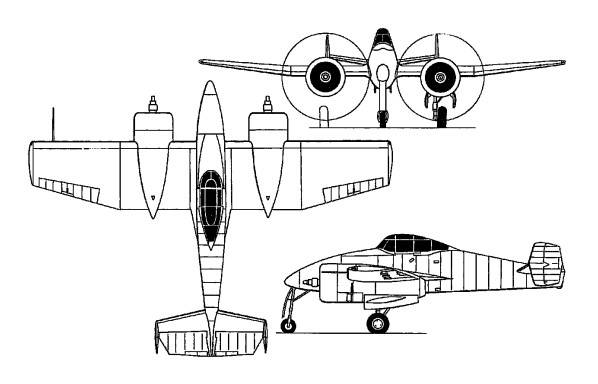
The projection of the aircraft. Figure All-aero.com
Design work was carried out in 1938-39. On November 25, 1939, the army and Grumman signed a contract to continue work, build and test a prototype. In accordance with the army nomenclature, the aircraft received the designation XP-50. From the base carrier-based fighter, he "inherited" the name Skyrocket.
Similarities and differences
For obvious reasons, the Air Corps could not accept an existing machine for fleet and therefore put forward its own tactical and technical requirements. For their implementation, the developer company had to significantly rework the existing XF5F project. However, even after that a fairly high degree of unification remained.
Once again, it was a question of an all-metal twin-engine airplane with a direct wing and an N-shaped tail. However, the armament requirements led to a serious alteration of the fuselage and some systems. First of all, they removed all the elements necessary for operation on an aircraft carrier. The wing now had no hinges for folding, and a hydraulically-driven hook was removed from the fuselage. We also reviewed the composition of the equipment in accordance with other operating conditions.
To fulfill the requirements for armament, the fuselage was lengthened due to the developed nose cone. Now this part protruded beyond the leading edge of the wing and protruded forward relative to the propellers. At the same time, the layout of the fuselage remained the same: behind the bow compartment of the weapons were placed a cabin and instruments. Due to the restructuring of the fuselage, the appearance of the aircraft has changed. Previously, the fuselage "hung" on the trailing edge of the wing, and now the main units of the airframe smoothly mated, like on other machines.
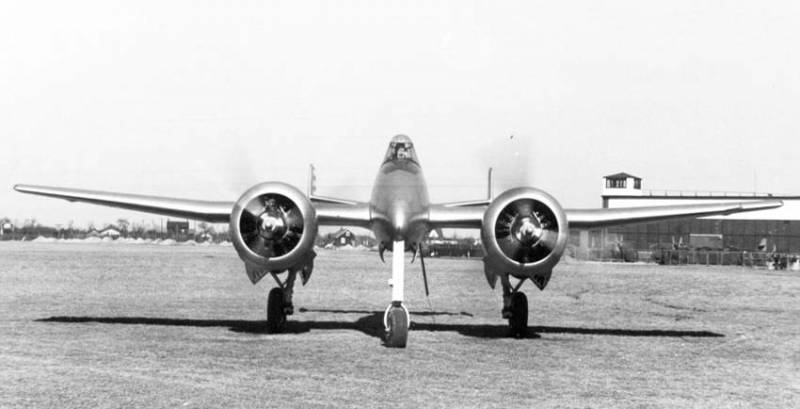
Both fighters from the Grumman were distinguished by a characteristic narrow fuselage. Photo Airwar.ru
For the XP-50 developed an updated wing. It retained the two-spar design, profile and dimensions, but lost its folding hinge. The tail has remained the same, N-shaped. As before, the planes were in the stream from the propellers, which increased the efficiency of the rudders.
Two Wright XR-1820-67 / 69 Cyclone piston engines with a capacity of 1200 hp were placed in the gondolas on the wing. with superchargers. Used Hamilton Standard screws, similar to those used on the XF5F. The fuel system included wing fuel tanks with a supercharged neutral gas.
The XP-50 received machine gun and cannon weapons suitable for combating air and ground targets. Two 20 mm automatic guns 20 mm AN / M2 (Hispano-Suiza HS.404) and two large-caliber machine guns .50 in AN / M2 (Browning M2) were placed in the nose compartment. The ammunition of the guns consisted of 60 shells per barrel, machine guns - 500 rounds each. Under the wing, there were units for hanging two 100-pound bombs.
Alteration of the fuselage led to a major change in alignment, which necessitated the restructuring of the chassis. The main racks remained in place in the engine nacelles. The tail wheel was abandoned, and a compartment with a retractable long arm appeared in the nose of the fuselage.
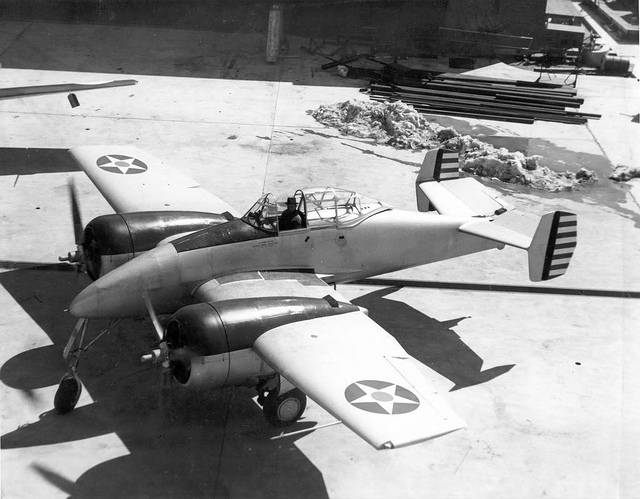
Top view: noticeable similarities with the base XF5F. Photo Aviation-history.com
The land fighter in its dimensions almost did not differ from the base deck machine. The wing span remained the same, 12,8 m. Due to the new nose, the length increased to 9,73 m. Changing the chassis increased the height to 3,66 m.
The XP-50 was a bit heavier than its predecessor. Dry weight - 3,77 tons, normal take-off weight - 5,25 tons, maximum - 6,53 tons. Mass growth could worsen take-off and landing performance, but this was not critical for a land vehicle.
The estimated maximum speed exceeded 680 km / h, the ceiling - 12,2 km. The climb was planned to be brought up to 1400-1500 m / min. Additional fuel tanks made it possible to obtain a practical range of up to 1500-2000 km.
Short trials
Deck XF5F-1 was built in the spring of 1940 and then made its first flight. Experienced XP-50 based on it was built in a few months. At the very beginning of 1941, he went to ground tests, after which preparations for the first flight began.
The first flight took place on February 18, 1941 and passed without any incident. The aircraft had good maneuverability and controllability and did not show any significant flaws. This was probably due to the fact that all the main structural elements have already been tested in the framework of the previous project. However, refinement of new systems and assemblies was still required.
In parallel with the correction of minor defects, measurements were made of the main flight characteristics. In each flight, it was possible to obtain higher performance, but the aircraft did not reach the calculated parameters. This was prevented by an accident that occurred in the 15th test flight.
On May 14, 1941, test pilot Robert L. Hall once again took the XP-50 into the air. During the execution of the designated flight program, one of the engine turbochargers was destroyed. The fragments inflicted multiple damage to the aircraft - among other things, they interrupted the hydraulic system pipeline and the landing gear cable. The pilot was not taken aback and tried to save the car. Through active maneuvering and the use of the surviving systems, he managed to get the main racks out, but the bow remained stowed.
On the ground, it was believed that landing without a nose stand would end in an accident and ordered the pilot to escape. R. Hall turned toward the nearest pond and jumped with a parachute. Soon, the pilot landed safely. The experienced XP-50 without control crashed and sank - without casualties and destruction.
New project
The customer and the developer decided to stop the XP-50 project and did not begin to build new prototypes. The accumulated experience was proposed to be used when creating a new fighter. Grumman improved the existing project and in May 1941 introduced the G-51. The Army Air Corps assigned him the XP-65 index. The development was paid from the funds remaining after the sudden termination of the previous project.
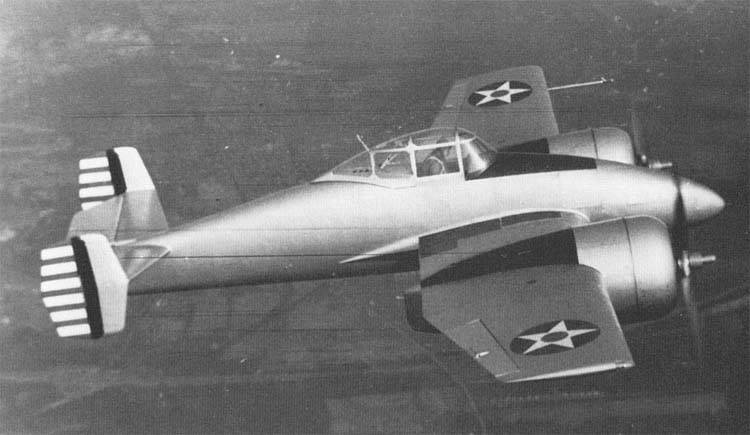
Fighter in flight. Photo Airwar.ru
Soon there was a proposal to finalize a new project for the needs of the army and navy. On the basis of the "ground" XP-65, it was proposed for the army to carry out a deck aircraft for the Navy - later it was called the F7F Tigercat. However, the creation of standardized fighters was associated with a host of problems of various kinds. In particular, the requirements of two customers in some cases could contradict each other.
Over time, the opinion about the G-51 project has changed. The Navy began to fear that work on the aircraft for the Air Corps would hit the development of the deck F7F. The fleet began to put pressure on the army and industry to abandon the XP-65. Curiously, the army did not resist, because the command doubted the ability of the “Grumman” to cope with work for two customers. In addition, the development of the XP-65 threatened other projects from recognized market leaders and “old friends” of the army.
In January 1942, the order for the XP-65 was canceled, but work on the F7F continued. On November 2, 1942, this aircraft made its first flight, and the next year entered service.
The XP-50 project in its original form had to be completed due to an accident. However, its further development, despite disputes and organizational problems, led to the appearance of a new successful aircraft. Unlike its predecessors, the F7F Tigercat successfully reached the series and managed to take part in the battles of World War II.
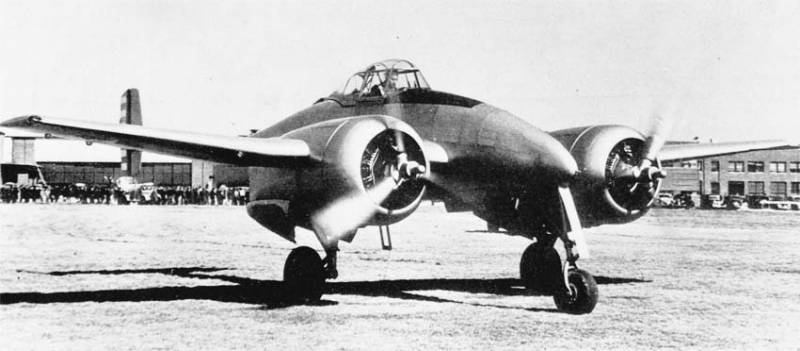
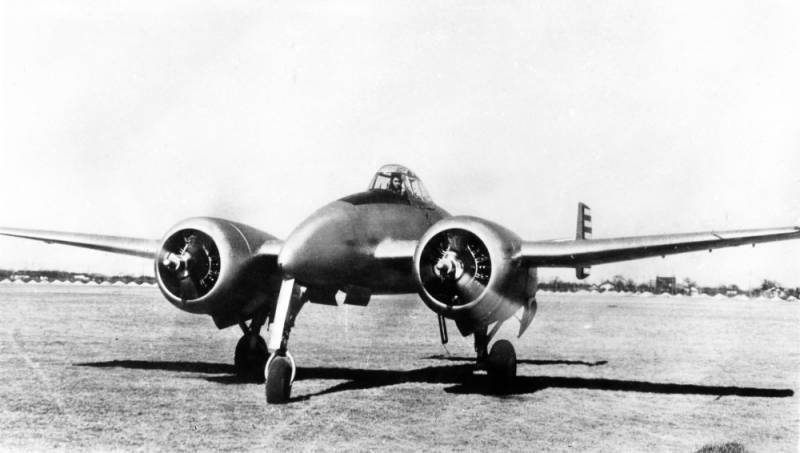
Information